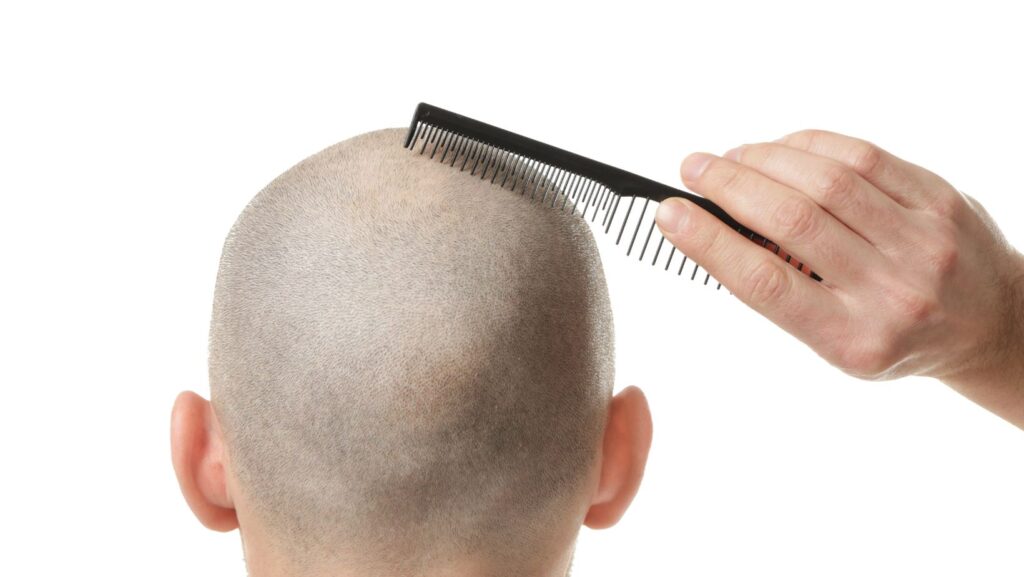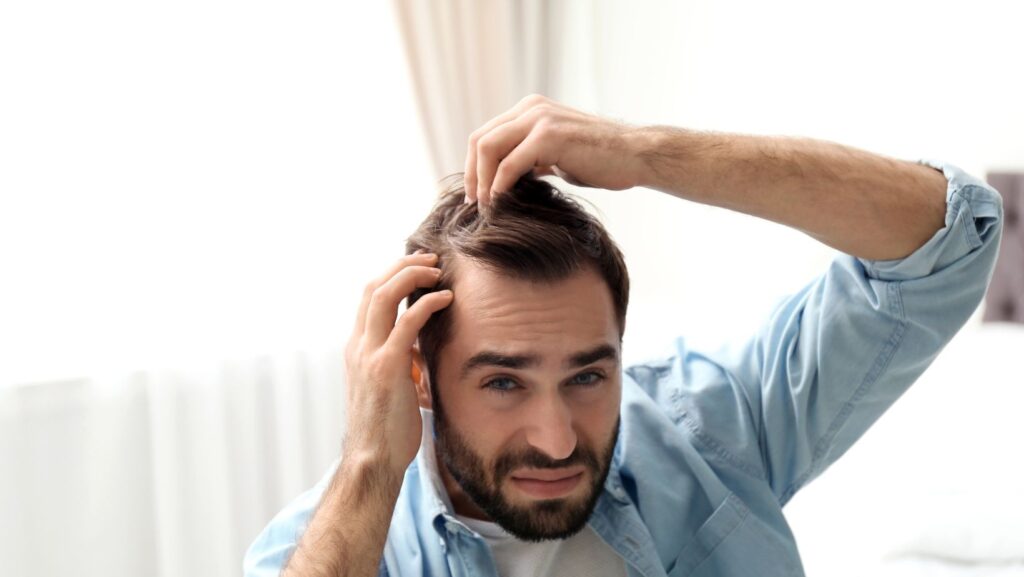For anyone concerned about thinning hair, shedding, or weak strands, finding the right hair regrowth oil can feel overwhelming. With hundreds of products on the market, many claim to restore thickness, shine, and strength. But here’s the truth: not all oils are created equal. Some lack the very compound that has been shown to nourish follicles, reduce breakage, and encourage healthy growth.
That missing element for many products? Batana oil.
This natural oil, sourced from the American palm tree (Elaeis oleifera) in Central and South America, contains nutrients and compounds that support scalp health and hair regrowth in ways that many other oils simply cannot match. If your current routine is missing this powerhouse ingredient, you may not be getting the full benefits you expect from your hair care.
In this article, we’ll uncover the science, benefits, and practical uses of batana oil for hair regrowth, while guiding you on what to look for in a truly effective hair regrowth oil.
Why Hair Regrowth Oil Needs More Than Just Moisture
Many people assume that any oil applied to the scalp will boost hair growth. In reality, most oils serve only as moisturizers—they lock in hydration and may reduce frizz but don’t address the deeper biological needs of the hair follicle.
Hair growth is a complex process involving the hair growth cycle, scalp circulation, hormonal balance, and nutrient supply. Oils like coconut, jojoba, or argan have beneficial properties, but they often lack specific compounds linked to regeneration of hair fibers and repair of damaged strands.
This is why batana oil stands out. Beyond moisturizing, it penetrates the hair shaft, replenishes lost proteins, and helps create an environment for regrowth.
The Secret Compound in Batana Oil for Hair Regrowth
Batana oil is rich in oleic and linoleic fatty acids, tocopherols (vitamin E), and carotenoids. These compounds do more than nourish—they actively support scalp and follicle health.
- Oleic Acid: Improves scalp penetration, allowing nutrients to reach hair follicles more effectively.
- Linoleic Acid: An essential fatty acid that strengthens the hair barrier and prevents protein loss.
- Vitamin E (Tocopherols): A powerful antioxidant that reduces oxidative stress—a major factor in hair thinning and follicle damage.
- Carotenoids: Naturally occurring pigments that protect the scalp against UV damage and environmental stressors.
When combined, these compounds create a unique synergy that promotes hair regrowth, scalp repair, and restoration of shine. This is why products missing batana oil often underperform.
Scientific Insights: Why Batana Oil Works
Research has shown that oils containing unsaturated fatty acids like those in batana oil help restore the lipid barrier of hair. A healthy lipid barrier reduces breakage, maintains elasticity, and minimizes split ends.
Additionally, the antioxidant content combats free radicals that damage follicles and accelerate hair loss. Stress, pollution, and even heat styling generate oxidative stress that batana oil can help counteract.
In indigenous communities of Honduras and Central America, batana oil has been used for generations to reverse hair thinning and restore volume naturally. Its reputation as a “miracle oil for hair regrowth” is supported by both tradition and modern understanding of its chemical profile.
Signs Your Hair Regrowth Oil Is Missing the Key Ingredient
Not sure if your current oil is enough? Here are some red flags:
- No noticeable reduction in shedding after consistent use.
- Persistent dryness even with regular oiling.
- Frizz and breakage remain despite moisturizing.
- Scalp feels irritated or itchy after application.
- Minimal shine or softness when compared to results from nutrient-rich oils.
If you notice these, your oil may lack essential compounds like those in batana oil.
Batana Oil vs. Other Popular Hair Oils
To understand why batana oil is worth considering, let’s compare it to other widely used oils:
- Coconut Oil: Excellent for reducing protein loss but limited in addressing oxidative stress.
- Argan Oil: Great for shine and smoothness but lighter in essential fatty acids.
- Jojoba Oil: Balances scalp sebum but does not penetrate as deeply.
- Castor Oil: Known for thick texture and scalp coverage, but can be too heavy and cause buildup.
Batana oil combines the strengths of these oils while adding unique restorative properties. It penetrates deeply, repairs damage, fights free radicals, and nourishes follicles at the root level.
How to Use Batana Oil as a Hair Regrowth Oil
Applying batana oil doesn’t require complicated routines. Here are effective ways to integrate it:
1. Pre-Shampoo Treatment
Massage a few drops of batana oil into your scalp and along the strands. Leave it on for 30–60 minutes before washing. This reduces protein loss and protects hair during cleansing.
2. Overnight Scalp Therapy
Apply directly to the scalp before bed. Cover with a silk bonnet to avoid staining. Overnight absorption boosts scalp circulation and follicle repair.
3. Leave-In Shine Booster
Rub a small amount between your palms and smooth over dry hair ends. This seals moisture and reduces split ends.
4. Blended with Other Oils
Mix batana oil with lighter oils like argan or jojoba for customized regrowth blends.
5. Weekly Hair Mask
Combine batana oil with aloe vera gel or shea butter for a nourishing DIY mask that enhances thickness and shine.
The Role of Scalp Health in Hair Regrowth
Healthy hair begins with a healthy scalp. Batana oil directly supports scalp wellness by:
- Moisturizing and reducing flakiness.
- Improving microcirculation for better follicle nourishment.
- Protecting against environmental toxins.
- Soothing irritation that can hinder regrowth.
If your hair regrowth oil doesn’t actively target scalp health, it’s likely missing the mark.
Real-World Benefits: What Users Experience
People who switch to oils containing batana often report:
- Less shedding within weeks.
- Thicker appearance after consistent use for 2–3 months.
- Increased shine and softness.
- Reduction in dandruff and scalp itchiness.
- Improved hair elasticity leading to fewer breakages.
These results align with both traditional uses and modern findings about the oil’s composition.
Choosing the Right Hair Regrowth Oil
When shopping for a hair oil, always check the ingredient list. Look for pure batana oil or blends where batana oil is a key component. Avoid products heavy in synthetic fillers or silicone, as they may give short-term shine but don’t repair or regrow.

One example is the pure batana oil offered by Keyoma. Incorporating this type of product into your routine ensures you’re not missing out on the very compounds essential for true regrowth.
Beyond Oil: Lifestyle Factors That Boost Hair Regrowth
Even the best hair oil needs support from overall wellness practices. To maximize results:
- Eat nutrient-rich foods high in proteins, iron, and omega-3 fatty acids.
- Manage stress, as chronic stress can disrupt the growth cycle.
- Avoid harsh chemicals in shampoos and treatments.
- Limit heat styling that breaks down hair proteins.
- Stay hydrated to support scalp and follicle function.
For those seeking holistic solutions, wellness systems like Elixir of Youth USANA also emphasize internal nutrition that complements external care.
Supporting Long-Term Hair Growth Knowledge
Learning how oils and nutrients work together empowers better decisions. Brands and guides are emerging to help people understand effective regrowth strategies. A great resource is this hair growth guide, which explores natural approaches and product options.
Final Thoughts: Is Your Hair Regrowth Oil Missing the Key Compound?
The answer for many people is yes. Without batana oil, your hair regrowth oil may only provide surface-level benefits without targeting deeper causes of thinning and breakage.
Packed with oleic acid, linoleic acid, vitamin E, and carotenoids, batana oil nourishes the scalp, restores damaged strands, and fosters conditions for healthy regrowth.
If your routine feels incomplete, consider upgrading to products that include this vital compound. One thoughtful change in your regimen could mean the difference between continued thinning and visibly healthier, fuller hair.


